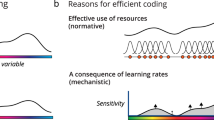Abstract
The signal-to-symbol problem is the task of converting raw sensor data into a set of symbols that Artificial Intelligence systems can reason about. We have developed a method for directly learning and combining algorithms that map signals into symbols. This new method is based on evolutionary computation and imposes little burden on or bias from the humans involved. Previous papers of ours have focused on PADO, our learning architecture. We showed how it applies to the general signal-to-symbol task and in particular the impressive results it brings to natural image object recognition. The most exciting challenge this work has received is the idea that PADO's success in natural image object recognition may be due to the underlying simplicity of the problems we posed it. This challenge implicitly assumes that our approach suffers from many of the same afflictions that traditional computer vision approaches suffer in natural image object recognition. This paper responds to this challenge by designing and executing a controlled experiment specifically designed to solidify PADO's claim to success.
Preview
Unable to display preview. Download preview PDF.
Similar content being viewed by others
References
H. Bourlard and Y. Kamp. Autoassociation by multilayer perceptions and singular value decomposistion. In Biological Cybernetics., 1988.
G. Cottrell. Extracting features from faces using compression networks. In Proceedings of the 1990 Connectionist Models Summer School., 1990.
The Symbolic Visual Learning Group. In personal correspondence, 1995.
John Koza. Genetic Programming. MIT Press, 1992.
John Koza. Genetic Programming II. MIT Press, 1994.
Mark Kramer. Nonlinear principal components analysis using autoassociative neural networks. In AIChe Journal., volume 37:2, 1991.
Dean Pomerleau. Neural Network Perception for Mobile Robot Guidance. PhD thesis, Carnegie Mellon University School of Computer Science, 1992.
Astro Teller. The evolution of mental models. In Jr. Kenneth E. Kinnear, editor, Advances In Genetic Programming, pages 199–220. MIT Press, 1994.
Astro Teller. Evolving programmers: The co-evolution of intelligent recombination operators. In K. Kinnear and P. Angeline, editors, Advances in Genetic Programming II, 1995. Submitted for review.
Astro Teller and Manuela Veloso. PADO: A new learning architecture for object recognition. In Katsushi Ikeuchi and Manuela Veloso, editors, Symbolic Visual Learning. Oxford University Press, 1995.
Astro Teller and Manuela Veloso. PADO: Learning tree structured algorithms for orchestration into an object recognition system. Technical Report CMU-CS-95-101, Department of Computer Science, Carnegie Mellon Unversity, 1995.
Astro Teller and Manuela Veloso. Program evolution for data mining. In Sushil Louis, editor, The International Journal of Expert Systems. Third Quarter. Special Issue on Genetic Algorithms and Knowledge Bases. JAI Press, 1995.
Author information
Authors and Affiliations
Editor information
Rights and permissions
Copyright information
© 1995 Springer-Verlag Berlin Heidelberg
About this paper
Cite this paper
Teller, A., Veloso, M. (1995). A controlled experiment: Evolution for learning difficult image classification. In: Pinto-Ferreira, C., Mamede, N.J. (eds) Progress in Artificial Intelligence. EPIA 1995. Lecture Notes in Computer Science, vol 990. Springer, Berlin, Heidelberg. https://doi.org/10.1007/3-540-60428-6_14
Download citation
DOI: https://doi.org/10.1007/3-540-60428-6_14
Published:
Publisher Name: Springer, Berlin, Heidelberg
Print ISBN: 978-3-540-60428-0
Online ISBN: 978-3-540-45595-0
eBook Packages: Springer Book Archive




